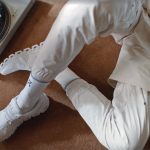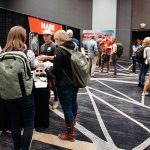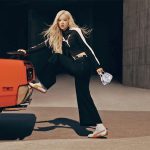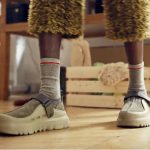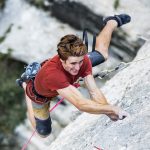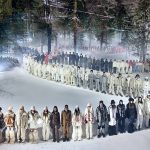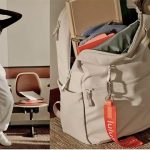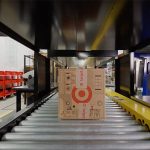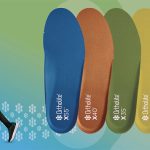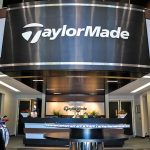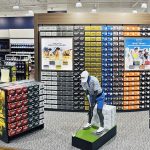With July 17 marking his first anniversary, Bracken Darrell, VF Corp’.s president and CEO, cited several accomplishments under his tenure, including reducing debt, inventories and costs on the company’s first-quarter analyst call. The sales decline in the latest quarter also moderated versus the prior quarter, but Darrell declined to forecast when growth would turn positive.
“I feel very good about the progress we’re making,” said Darrell. “It feels very similar to where I was when I was in my last company, and I feel like I can see it, and I feel good about it.”
As CEO from 2013 until he joined VF Corp., Darrell received credit for transforming Logitech from a sleepy keyboard-maker into a fast-growing tech player focused on design. Darrell promised VF would offer guidance on its return to growth and other longer-term targets at a two-part investor conference the company will hold on October 30 in New York City.
First Quarter Sales Decline 9 Percent
VF’s first quarter marked another challenging quarter, with sales down nearly double-digits and losses widening, but the company saw improvement once again compared to the previous quarter. Results also aligned with company expectations, and VF reiterated its outlook for the year.
Sales in the quarter ended June 30 were down 8.6 percent year-over-year to $1.9 billion, ahead of analysts’ consensus target of $1.84 billion. On a constant-currency (c-c) basis, sales were down 8 percent, improving sequentially from being down 13 percent in its fourth quarter and 17 percent in its third quarter.
Darrell said the sales decline was “a little better than expected, demonstrating slight sequential improvement versus Q4 with the trend line improvement across almost all brands.” DTC revenues were flat with year-ago levels, excluding Vans. Vans is closing a number of unprofitable and non-strategic stores.
He noted that the spring quarter represents VF’s smallest quarter of the fiscal year and is largely skewed towards the Americas and wholesale.
Gross margins in the quarter declined 80 basis points for the prior year to 52.0 percent, aligning with guidance. The decline was primarily driven by continued efforts to clear inventories from Vans product as part of the brand’s reset.
SG&A expenses increased 360 basis points as a percent of sales to 57.0 percent, primarily driven by sales deleverage. Overall, SG&A expenses were down 2.1 percent due to its Reinvent restructuring program.
The fiscal 2025 first-quarter loss per share was 67 cents, compared to 15 cents per share for the fiscal 2024 first-quarter loss. The quarter’s adjusted loss per share was 33 cents, compared to 15 cents per share in the prior-year quarter. Results came out just ahead of analyst consensus target of an adjusted loss of 35 cents.
Leadership Changes
In brief remarks before the Q&A session, Darrell highlighted the extensive changes to VF’s leadership team. “On the year-end, we changed eight 11 direct reports, two of those are promotions. As planned, we made 3 of these changes since our last earnings call, including the leaders of our two biggest brands,” said Darrell.
The recent hires include Sun Choe, formerly chief product officer at Lululemon, as global brand president, Vans; Caroline Brown, former CEO of Donna Karan International, as global brand president, The North Face; as global brand president of The North Face, and Paul Vogel, formerly at Spotify, as CFO.
Other newer hires this year include a chief strategy and transformation officer, Abhishek Dalmia and chief design officer, Alastair Curtis. Promotions included Nina Flood, who formerly led the global packs business to run Timberland and Martino Scabbia Guerrini to chief commercial officer and president emerging brands. Said Darrell, “We have a full team now and you can feel the energy.”
Reset Transformation Plan Update
Darrell also provided an update on VF’s Reinvent transformation program, which has four priorities: reducing costs, lowering debt, resetting the U.S. business, and getting Vans back on track.
During the quarter, VF generated a further $50 million in cost savings, which is in line with its target of delivering $300 million in cost savings by the end of the first half of the fiscal year. Darrell said, “And we have no intention of stopping there. As we said from the beginning, we’re reinvesting some of that back into the business in the key areas of product and brand building. And those savings are further offset by rebuilding our annual incentive program and inflation on salaries and other areas. But as I said before, we are absolutely committed to more cost reduction.”
VF reduced inventories at the end of the quarter by 24 percent year-over-year and net debt by $587 million versus last year. He also noted that VF had previously indicated that it had concluded its strategic portfolio review. As part of the process, VF announced in mid-July that it reached an agreement to sell the Supreme business for $1.5 billion to luxury eyewear company EssilorLuxottica. Said Darrell, “To be clear, I love the Supreme Brand, and I love the Supreme team. It’s back to strong, profitable growth. But the lack of synergies with the rest of our organization made it a clear choice for divestiture. This allows us to sharpen focus on the core business and also improve our leverage.”
On reviving growth in the Americas, Darrell noted that VF had established the Americas regional platform, which is in place and operational as part of the company’s global commercial organization. He said the region “continues to perform well below our potential but the decline softened from negative 23 percent last quarter to negative 12 percent in Q1. Almost as important to me near term, we continue to be able to forecast the business. We now have eight consecutive months of accurate forecast.”
Vans Sees “Modest Improvement” in Q1
On Vans, Darrell said VF had indicated that the first quarter would be similar to the fourth quarter, excluding the impact from inventory reset actions. The brand saw “some modest improvement,” with sales down 21 percent in Q1 versus 27 percent in Q4 and 29 percent in last year’s Q3, reflecting an improved trend in its two biggest regions.
By region, cc sales in the Americas dropped 25 percent following declines of 31 percent in both the prior fourth and third quarters. EMEA cc-sales slid 3 percent following declines of 13 percent in the fourth quarter and 23 percent in the third quarter. In the APAC region, sales were off 3 percent compared to declines of 13 percent in the fourth quarter and 27 percent in the third quarter.
“Importantly, while the headline numbers remain weak, several indicators are showing we’re head in the right direction. EMEA is once again the region which is showing clear early encouraging signs with wholesale up in the quarter for the first time in six quarters with particularly positive momentum in key accounts,” said Darrell. “As a result of the inventory reset actions, our markets are clean, and we have space to introduce our new products, which are performing well across regions.”
The Knu Skool is now Vans’ number two franchise globally, performing well across regions. Its skate shoe, AVE 2.0 and UltraRange Neo, introduced recently, are gaining traction.
Vans’ brand elevation strategy showcased a new collaboration with New York-based designer Proenza Schouler around its Off The Wall collections, “showing the depth and breadth of our brand’s potential.”
For the 2024 Paris Olympics, Vans has 20 sponsored athletes across skateboarding and BMX at the games and rolled out several grassroots efforts around the competition. Darrell added, “In fact, just today, we won gold and silver in today’s women’s skate event.”
Many of Vans’ athletes are also driving the brand’s “Always Pushing“ marketing campaign. Darrell said, “These new products and marketing efforts are resonating with consumers and contributing to further progress in Google search trends which continue to move in the right direction across our markets.“
Vans’ sales fell 21.1 percent on a reported basis in the quarter to $581.8 million. On a cc-basis, sales were down 21 percent following declines of 27 percent in the fourth quarter and 29 percent in the third quarter.
The North Face Q1 Sales Slid 3 Percent
Sales at The North Face declined 2.6 percent in the quarter to $524.2 million. On a currency-neutral basis, sales were down 2 percent following declines of 5 percent in its fourth quarter and 11 percent in the third quarter.
By region on a cc basis, sales in the Americas slumped 10 percent in the first quarter but marked improvement over declines of 15 percent in the fourth quarter and 24 percent in the third quarter. EMEA sales, on a currency-neutral basis, were down 6 percent, worsening from a decline of 3 percent in the fourth quarter and 5 percent in the third quarter. In the APAC region, sales on a cc basis jumped 35 percent, following a gain of 15 percent in the fourth quarter and 28 percent in the third quarter.
A bright spot for TNF was DTC, which showed growth of 6 percent (+8 percent cc) year-over-year, inclusive of broad-based DTC growth in all regions.
Darrell said about TNF, “The underlying reality is we continue to have good solid DTC growth around the world, and China continues to just be super strong, which is exciting. Wholesale is relatively weak, both mainly driven by traffic and conservatism, I think, on the retail side, both in the U.S. and, to some extent, Europe too.”
He attributed the weak ordering pattern at wholesale partly to the overall macro environment, but he also believes there is “also a little bit of skittishness just because of the weather last year when it was so warm during the holiday season.”
Darrell added, “So, we’re not guiding TNF going forward, but I feel good about the brand. I feel good about the product initiatives that are coming. And I would say stay tuned. I think TNF going to be just fine.“
Timberland sales reached $229.4 million, down 9.6 percent on a reported basis and 9 percent on a cc basis. By region on a cc basis at Timberland, the Americas showed a gain of 2 percent while sharp declines were seen in EMEA, down 15 percent, and APAC was off 21 percent.
The company did not provide additional details on Timberland’s performance.
Dickies’ sales reached $116.8 million in the quarter, representing a decline of 14.5 percent. On a currency-neutral basis, sales declined 14 percent, with declines of 32 percent in the APAC region, 13 percent in the Americas, and 2 percent in EMEA.
Asked about Dickies during the meeting, Darrell said part of the brand’s challenges is that VF “moved too fast to try to turn it into a pure fashion brand in the U.S., and then we pushed to make it a pure fashion brand outside the U.S. It continues to do that outside the U.S.; it’s doing fine. In the U.S., it struggled because we lost our footing in our core work business, and we’re completely refocused there now. So, I’d say more to come there. I think Dickies is a fantastic brand and a great business, a really good, strong, solid brand, and we’ll get it back on its footing. It will just take a little time.”
Other Brands’ revenues were a bright spot, climbing 8.3 percent to $455.0 million and ahead 10 percent on a cc basis. The segment includes Altra, Eastpak, Icebreaker, JanSport, Kipling, Napapijri, Smartwool, and Supreme.
The company provided no further details on the performance of VF’s Other Brands segment, although Darrell reiterated that VF had completed its portfolio review and does not “have anything specifically contemplated“ regarding asset sales.
Darrell said about the Supreme divestiture, “This puts us in a good position to pay off the next two tranches of debt as we promised. And from there on, it will be about a good strong cash generation unless we decide to divest something else in the future. And I’d say stay tuned on that. The October Investor Day will give you a good sense for how we expect that debt to come down.”
Second-Quarter Guidance
VF has yet to provide full-year guidance since withdrawing it last November when it announced the reset turnaround plan.
In its fiscal second quarter, Darrell forecasted continued “modest improvement“ in sales sequentially against first-quarter results. Darrell said, “Don’t get me wrong, we’re not back in growth yet, but the decline rate should continue to moderate.”
He added, “At Vans, we will see modest sequential improvement as we did this quarter. For the North Face, we expect Q2 revenue to be slightly down relative to Q1 but remember, TNF had 17 percent growth in Q2 of last year.“
Gross margins are expected to be up slightly in Q2 versus last year as “inventory quality has improved, so there is less impact from the flushing of inventory post-Vans reset,“ said Darrell.
SG&A expenses in Q2 are expected to be up slightly year-over-year as incentive compensation, and inflation offset savings from the Reinvent plan.
For the full year, VF reiterated guidance for free cash flow plus the proceeds from non-core physical asset sales of approximately $600 million, excluding the impact of the divestiture of Supreme, which the company anticipates will be completed by the end of calendar year 2024. Supreme is expected to be reported as discontinued operations beginning in fiscal Q2.
Darrell concluded in his prepared statements, “We continue to make progress. The quarter improved sequentially relative to Q4 across almost all our brands. We’re advancing on Reinvent. Cost savings are on track, and we’re committed to more cost reduction. We’re addressing the balance sheet leverage ratio with the first sale of spring. The new platform in the Americas is moving strongly in the right direction and advance we’re seeing progress we expected. My level of confidence has never been higher. We have an incredible leadership team and dedicated talent at VF. So together, we will make the continued progress on our path to deliver strong, sustainable growth and value creation at VF.”
Image courtesy VF Corp.



